Phase 2 — Developing Your Gentleman Spy Style
Lesson 5 — Accessories
LESSON 5: Accessories
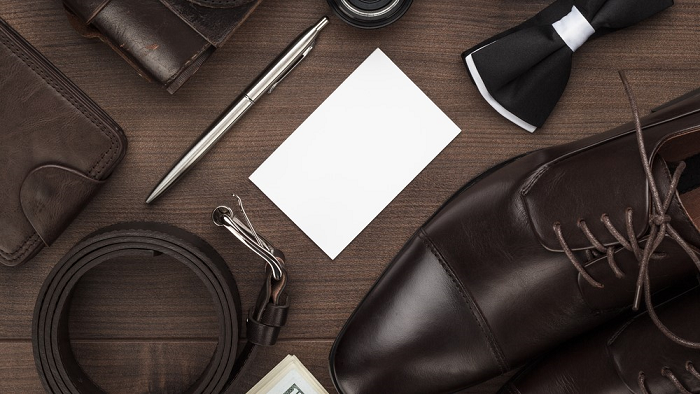
The right clothing requires the right accessories. The best suit in the world won’t look good if you pair it with clunky rubber soled shoes and a plastic watch.
In conjunction with the rest of the wardrobe, most of your accessories will do double-duty or more. A quality watch is as at home diving with sharks in the Bahamas as it is at the finest restaurants in Hong Kong, London, or Paris, and a good pair of shoes can match as easily with jeans and a t-shirt as with business attire.
Shoes
Dress shoes were covered in the suit module, and casual shoe styles were covered in casual clothing. But it bears repeating again: you need proper dress shoes with a suit, and quality casual shoes for most of your daily wear.

Black, plain toe or cap-toe balmoral Oxfords are the gold standard for dress shoes, from daily wear at the office to wearing with a tuxedo.
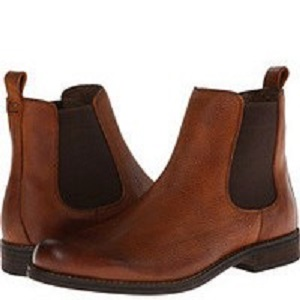
For casual shoes, quality boots like desert or Chelsea boots are great choices for all-around wear. Moccasins, boat shoes, and even Chuck Taylor's or Vans are good choices on the more casual side. Monk-strap Oxfords, derby, or brogue shoes give you options on the more formal side.
For the man just getting started, if you have nothing but a pair of brown boots and black cap toe oxfords, you would be just fine.
You must care for your shoes properly. You don't need to polish them every day, but for shoes you wear on a regular basis, doing weekly upkeep will make your shoes last far longer and look much better than just wearing them and putting them in the closet every night.
- Brush off dirt
- Wipe clean with a damp cloth
- Condition leather
- Polish smooth leather or use appropriate waterproofing or treatment for oiled or suede leather
- Using cedar shoe trees for dress shoes or boots is a very good idea
Many people — women especially — will notice and judge you by your footwear. You don't need to wear $1,000 shoes, but your shoes should be clean and well cared for all the time.
Belt
Your belt should match the shoes fairly closely. No brown belts with black shoes, and vice versa. To save hassle, is wise to always buy a matching belt when you buy new shoes.
The buckle on your belt should match the rest of the metal you’re going to wear. If you’re wearing a stainless-steel dive watch, make sure your belt buckle is silver as well.
Watch
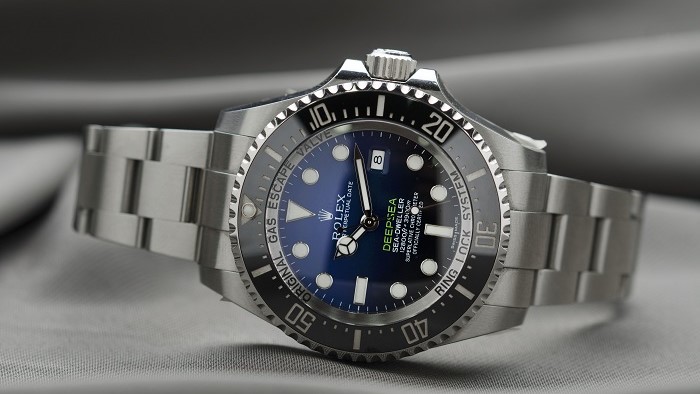
A wristwatch is arguably the only piece of jewelry a man should ever wear other than a wedding band.
A good timepiece is functional, stylish, and will last for decades or longer with proper care. Good choices here will set you apart from the crowd wearing G-Shocks and Apple watches.
When choosing a watch, remember that a man's watch is a sign of taste and where you are in life. If you want to exude the class that 007 is known for, selecting the perfect timepiece from a good brand will go much further than a cheap watch or large and gaudy timepiece will, regardless of how much it costs.
The reasons behind the watch go deeper:
— Like precious metals, a good watch can be viewed as a store of value, often holding value or appreciating for decades after the purchase.
— The high-end nature of a luxury timepiece also serves as additional insurance; if you were ever caught without cash and needed to stay out of a third-world prison, a high-end mechanical wristwatch makes a good bribe.
— While one shouldn't necessarily consider it an "investment," a good watch is seldom a waste of money. This is especially true of Rolex or Patek Philippe; less so with other brands.
For a timeless style that is as appropriate at the beach as it is in a suit and tie, you want to look towards a few styles: the dive watch, field or pilot's watch, or a chronograph.
When buying a watch, lean towards watches manufactured by an actual watchmaker, rather than luxury brands that outsource their watch design. Other points to consider include a Swiss or Japanese movement; solid feeling, all metal construction; a locking deployment clasp (if on a metal bracelet); and a signed or engraved case back.
There are excellent choices at almost every price bracket:
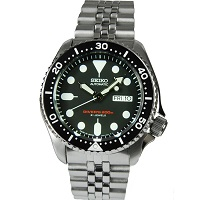
$100-$500: quality working timepieces. This segment is dominated by the Japanese, primarily Seiko and Orient. The Seiko 5-series and SKX-series arguably represent the best value for the money of any watches ever made, while Seiko Prospex (professional series) dive watches and Orient dress watches are also excellent choices depending on your sense of taste and style. The standout here is the Seiko SKX-007 which meets the stringent ISO 6425 criteria for automatic dive watches and has a "luxury" pedigree including an in-house mechanical movement from a respected manufacturer that isn't met again until you spend well over $1,000.

$500-2,500: Here you have myriad choices, from Seiko to Tag Heuer, Cartier, and maybe even an Omega if you get a good price. Standouts include Hager which was initially available only to CIA employees, Marathon for tool watches, Hamilton as an American brand with great history and quality construction, Longines for a brand with an awesome history of exploration, and the Doxa Sub-series dive watches which combine interesting history with cool style (caveat: the colorful orange or yellow faces of the Doxa Sub's might not mesh as well with a suit as others, and would never be appropriate with black tie attire). There are countless other brands in this price bracket; if you find one with a style, story, or history that resonates with you, go for it.
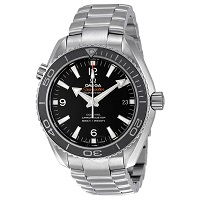
$2,500-$5,000: This is getting into luxury territory where you start seeing the more household luxury names. Tag and Cartier are still here, and you add heavy hitters like Jaeger-LeCoultre and IWC. Tudor and Omega rule the dive watch segment in this price bracket. Tudor is owned by Rolex, but has its own history and heritage; the Black Bay and Pelagos are both good choices. Omega has excellent choices like the Speedmaster for history and heritage, or the Seamaster, Aqua Terra, or Planet Ocean if you want James Bond's watches.
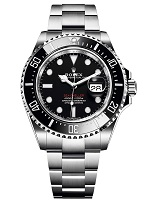
$5,000-15,000: True luxury, heritage, and investment-grade pieces. Blancpain, IWC, Breitling, Cartier, Jaeger-LeCoultre, and others have excellent pedigrees and iconic timepieces that are respected in any circle (Blancpain Fifty Fathoms, IWC Portuguese, Breitling Navitimer, Cartier Santos, Jaeger-LeCoultre Reverso). For those choosing to make an "investment," this is Rolex territory. Anything from the Oyster Perpetual to the Explorer, Datejust, Submariner, GMT Master, SeaDweller, or Deepsea are good choices depending on your sense of style and budget.
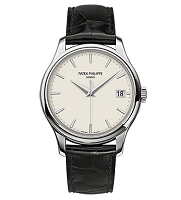
$15,000 and above: You will still find Rolex here, typically models incorporating precious metals instead of steel (fun fact: Rolex runs their own foundry to make all the gold used in their watches in-house). Others to look at here include Blancpain, Audemars Piguet, and Patek Philippe. If looking towards an "investment" piece, Rolex and Patek Philippe are the way to go. The two powerhouses will almost always command better resale prices, with some models appreciating in value over the years.
Wallet
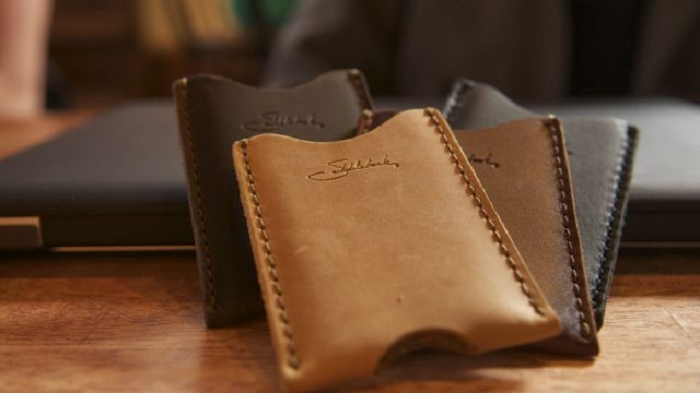
Many men these days walk around with wallets that could almost double as a woman's purse. They are huge, overstuffed bricks containing every business card, stray dollar bill, and club card you've ever collected. They make you sit funny when you stuff them in your back pocket, and they look horrible when you pull them out to pay. Get rid of this immediately.
Purchase a small leather wallet that will accept only the bare necessities:
- Cash, $100 minimum (Pro tip: use this as emergency cash; carry daily spending money in a money clip in your front pants or jacket pockets)
- Identification (drivers license, CCW permit)
- 2 credit cards (or one credit card and one debit card)
- Business card (optional; if you regularly hand out personal or business cards, carry them separately)
For those that regularly travel internationally, keep a separate passport wallet into which you can transfer your essentials if needed.
Given the minimalist nature of what you should carry in your wallet, it's important to take note of what you should NOT carry:
- Miscellaneous cards: passport card (exception for folks that live near the border and regularly make land or sea crossings that utilize the passport card, otherwise, leave it at home), discount, membership, club, insurance, library, etc. Keep a separate wallet in your vehicle, keep cards at home and only take them on specific errands if necessary, or use one of the various apps to keep them all on your phone
- Social security card: should be stored at home in a safe place
- Condoms: keeping them in your wallet will destroy them; if you need condoms regularly, keep them elsewhere
- Receipts: if you must keep receipts for business or tax purposes, use another system for dealing with them - they do not belong in your daily use wallet
- Checks, password cheat sheets, birth certificates, bank account or routing numbers, spare keys; seriously, do not keep anything but the absolute, bare necessities in your wallet. Any of the above, if stolen, can wreak havoc on your life. Keep it all safe and secure.
Sunglasses

If you're outside on a sunny day, it's a safe bet you're either wearing some kind of shades, or you should be. Sunglasses protect your eyes from harmful UV rays, as well as dirt, debris, salt spray, snow, etc. when you're running, riding, on the water, or the mountain. They can help you see better, and keep you looking younger by keeping you from squinting in bright sun. The right pair of sunglasses can make or break your style, so choose them wisely.
As with your watch, you want to choose from manufacturers that make good sunglasses, not the cheap convenience store sunglasses or the "designer" brands that charge a premium only to skimp on optical quality over style (and that will likely go out of style soon anyway). Brands like Ray Ban, Maui Jim, Costa, Oakley, Randolph Engineering, Kaenon, and Persol are all good choices, offering styles to fit a variety of faces and lifestyles.
What type of glasses you purchase will be dictated by your personal style, face shape, and lifestyle, but there are standards that work well for almost everybody in different scenarios.

Wayfarers: Perpetually stylish since Ray-Ban invented them in 1956. These are equally at home in a suit and tie or with shorts and flip flops. Ray-Ban makes the originals, as well as the updated New Wayfarer, and variations on a theme are available from most manufacturers.
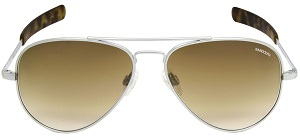
Aviators: Designed in the 1930's for pilots, these are classics that have been and will remain stylish for decades to come. Available from almost every major manufacturer, you can find sizes and styles to fit any budget and style. These are equally suited for casual or formal wear, making them a great choice for all-purpose eye wear.
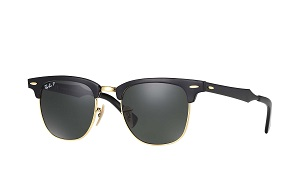
Clubman: Similar shape to the wayfarers, with a plastic top and wire bottom. Like the others, these are perfectly at home in any environment, but lean more towards dressy than super casual.
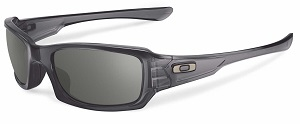
Wrap Around: Usually offered with plastic frames for more sport/outdoor/athletic pursuits. These are decidedly more casual than the above choices, so they probably shouldn't be your everyday choice if you wear a suit and tie to work every day. Different sizes, different frame materials, and different lens shapes from every manufacturer mean there are countless choices to pick the perfect pair. As these are more casual, you can also be more adventurous with different colors and lens tints than with more formal styles.

Round Frame: More of a vintage/creative look than the above. These can look good on many face types, and if they work for your personal style, go for it, even if they don't typify the more refined Gentleman Spy look.
Lens materials will vary somewhat between manufacturers, but you're basically looking at either optical glass or polycarbonate lenses in any quality pair of sunglasses.
- Optical glass lenses will give you the best clarity and least distortion. They are very scratch-resistant and durable, but are heavier and not as impact resistant as polycarbonate lenses.
- Polycarbonate lenses will still give excellent optical clarity, though not as good as glass, while being lighter weight. Polycarbonate is much more impact resistant than glass but can scratch more easily.
- Plastic lenses, like those found in inexpensive convenience store sunglasses, generally combine the worst of all worlds: they score worse on optical clarity, distortion, weight, thickness, impact resistance, and scratch resistance than either polycarbonate or glass. They are, however, inexpensive.
For most men, especially those who live very active lifestyles, you should opt for at least two different pairs of sunglasses: one pair of wayfarers, aviators, or clubman style glasses for a more sophisticated look, and a pair of wrap around glasses with plastic or acetate frames and polycarbonate or SR-91 lenses for more active pursuits like working out, running, sports, hiking, etc.
NOTE: If you intend to use your glasses for shooting sports, make sure they are rated for ballistic protection. In the US, that means ANSI Z87.1 or MIL-PRF-31013. In Europe, that means EN 166. Oakley, Smith, Revision, and many others offer stylish daily wear glasses that meet at least Z87.1 standards, if not MIL-PRF-31013 and are perfect for other activities or sports as well.
Pen
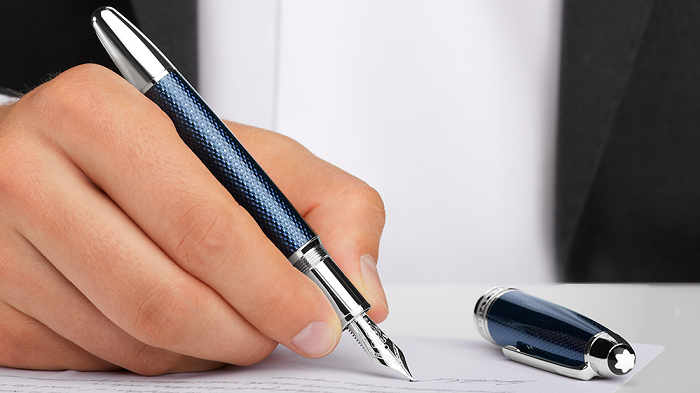
Nothing exudes style and class like nice handwriting laid down by a beautiful fountain pen. It isn't for everybody: for the frequent traveler, fountain pens may be more trouble than they're worth (watch out for leaks because of cabin pressure changes) and those that work in rough and tumble trades might be better served by something else. Whatever your choice, having and using a good pen is always a good idea.
If you decide a fountain pen is your style — and plan to actually write with it — you don't need to default to the high dollar Montblancs or Dunhills you see in the movies. To get started in fountain pens, Kaweco, Lamy, Pilot, TWSBI, and Pelikan make excellent pens that write well (often better than their expensive counterparts) without breaking the bank. Cross, Parker, Sailor, Waterford, Waterman, and others have exceptional pens across many price brackets. Aurora, Cartier, Montblanc, Montegrappa, and other boutique manufacturers offer pens that can cost many hundreds or thousands of dollars.
For those who don't want to or can't rely on fountain pens, a quality rollerball or ballpoint is a great step up from the dollar store pens or whatever your office provides. From $5 to $500, your choice here is limited only by your personal style and budget with good options from dozens of manufacturers. Whether you opt for a capped, twist, or retractable pen, quality resin or metal construction will always be more stylish than el cheapo plastic, and you can always find quality and style without breaking the bank. Cross, Fisher, Lamy, Montblanc, Parker, Pilot, Waterford, Waterman, and many others offer options to suit every style and budget.
Be wary of the "tactical" pens that are often promoted by those in the firearms, self-defense, or "spy" worlds. These pens are big, clunky, usually don't write well, and can label you in environments where you don't want to be singled out. Security checkpoints are a prime example of this; the pen might be "legal," but its presence will invite additional scrutiny towards everything else you do or carry. Besides, you didn't join Gentleman Spy to look like Tactical Timmy carrying around a "tacticool" pen.
Instead, opt for a quality rollerball or ballpoint that offers the style and writing quality you need. For everyday carry, an excellent example is the stainless steel Parker Jotter, an $8 pen that writes better than pens costing ten times its price and offers almost all the advantages of the "tactical" pens with none of the drawbacks.
Metals: jewelry, money clips, cufflinks, tie clips, etc.
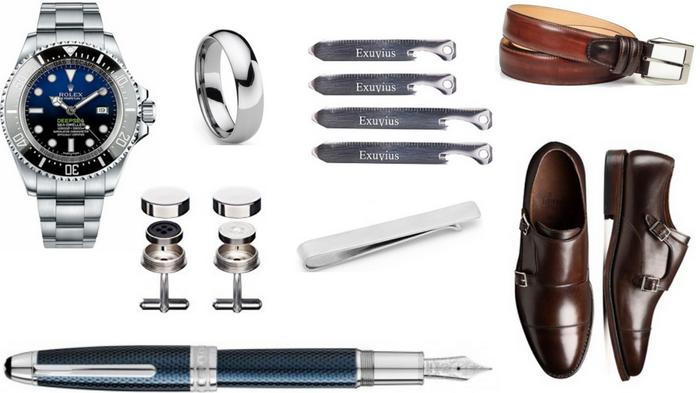
The various metals in your wardrobe should match. If the watch and belt buckle are silver, your money clip and cufflinks should be too. If you’re wearing a gold watch, use the gold cufflinks. If you decide to use a tie clip, pin, or have other flashy metal accessories like buckles on your shoes or pens with precious metal inlays, these should all be taken into consideration and match as closely as practicable.
This doesn't have to be something to which you put a lot of thought. Most men should standardize on one color and make sure everything matches.
- Light skin tones should generally lean towards silver (silver, steel, white gold, platinum, etc.).
- Medium skin tones (Asians, Latinos, Mediterranean descent, etc.) can often go either way, so play around with silver and gold and see what looks best on you.
- Dark skin tones (African or Indian descent) will usually want to go with gold.
PROGRAM
Next lesson...
From sloppy hair to hipster beards so common today, it's not hard to stand apart from the rest with a solid, easy to maintain grooming routine that will always have you looking your best.
